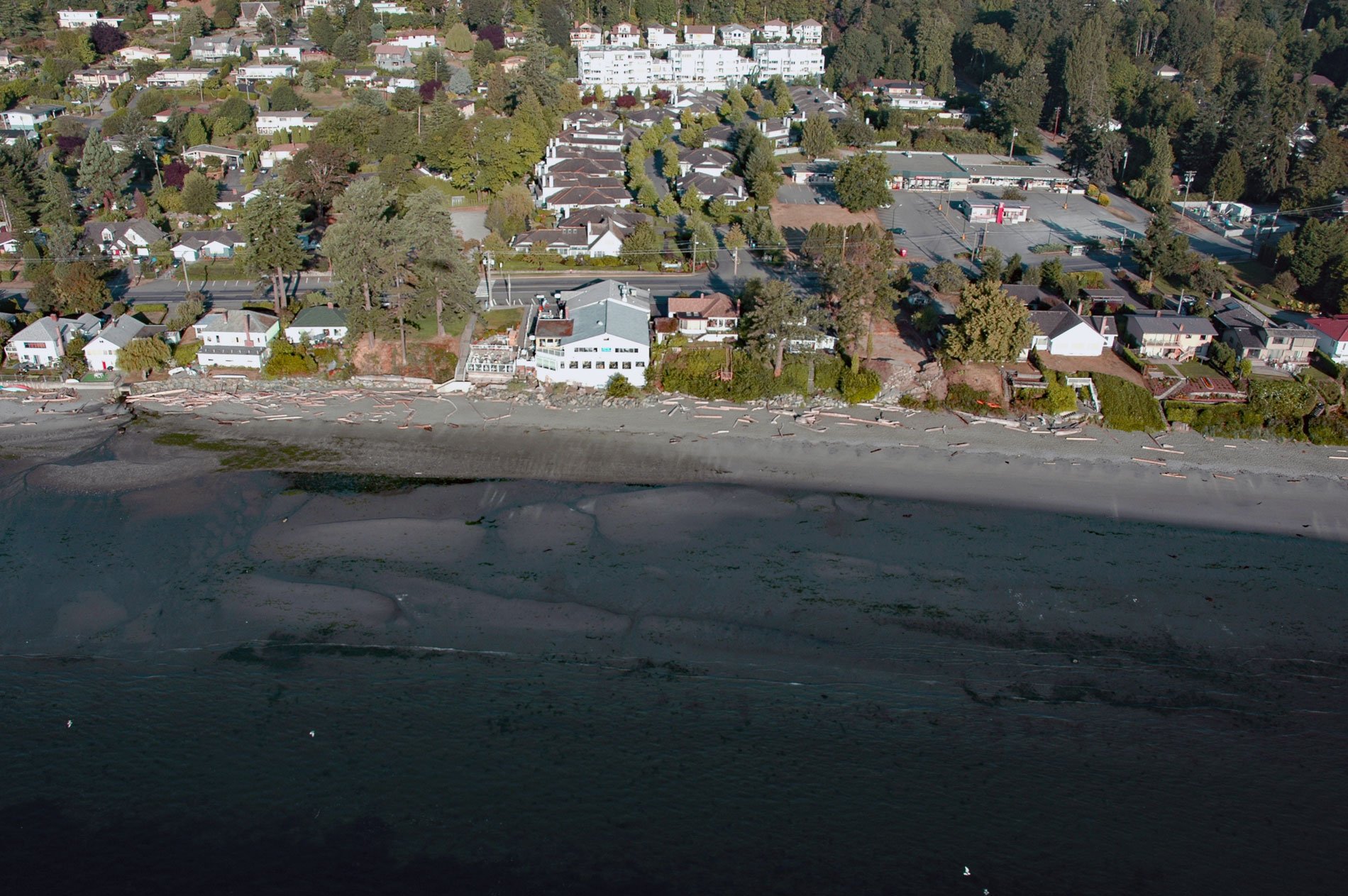Cordova Bay is a shallow bight and a community located on the eastern shore of the Saanich Peninsula in the municipality of Saanich, one of the 13 cities comprising the Greater Victoria Region on Vancouver Island, about 9 miles (14.5 km) south-southeast of Sidney and 7 miles (11 km) north of downtown Victoria, British Columbia. In 1790, a Spanish expedition aboard Princesa Real sailed into the Strait of Juan de Fuca under the command of Lieutenant Francisco de Eliza. The expedition included Lieutenant Salvador Fidalgo, Ensign Manuel Quimper, and navigators Gonzalo López de Haro and Juan Carrasco. They explored the Salish Sea and named an embayment on the south tip of Vancouver Island ‘Puerto de Córdova’, after the city of Córdoba, and claimed it for Spain. The British later renamed this bay Esquimalt Harbour and transferred the name ‘Cordova Bay’ to its present location. Vancouver Island is formed mostly by rocks of the Wrangellia Terrane, an accretionary complex that is part of the Insular Belt. The southeastern part of Vancouver and the Saanich Peninsula in particular represents Mesozoic island arc-related volcanic and sedimentary rocks, and at Cordova Bay these are overlain by a sequence of Triassic basalts and marine sediments. The present-day landscape is a result of island-wide glaciation during the Pleistocene.
A long sandy beach is a significant feature of Cordova Bay which has influenced its historical development and character. The general area is the traditional territory of the Lekwungen people and Cordova Bay was central to the Coast Salish by providing a relatively sheltered beach for landing canoes and diverse upland habitats for gathering food. The forest provided cranberries, huckleberries and salal berries, while the bay provided halibut, herring, cod, crabs, oysters, clams, mussels, seaweed and fish eggs. In 1851, the lands of Vancouver Island were granted to the Hudson’s Bay Company for settlement as a Crown Colony. In 1858, the first year of Crown land sales on the Saanich Peninsula, 988 acres (400 ha) between Elk Lake and Cordova Bay were purchased by Samuel Haseltine, James Farquhar, George Deans, John Tod, Thomas Skinner, and Henry Smith. Two of the first people to actually settle in the area in the early 1880s were Philip Touet and James Pusey. The first summer resident along the beach was Frederick Norris, a well-known Victoria businessman. In 1913, the Canadian Northern Pacific Railway ran tracks along what is now Lochside Drive to connect Victoria with a ferry service from Patricia Bay to Port Mann on the mainland in Surrey. In 1916, a station was constructed at the corner of present-day Lochside Drive and Haliburton Road and a year later the rail was opened for passenger service.
The introduction of rail service on the Saanich Peninsula had a significant impact on the mobility of the urban population by providing more lifestyle choices. This brought an influx of summer residents to Cordova Bay and initiated the subdivision of waterfront property into small residential lots. The rural landscape quickly changed as a community became established around the rail station. In 1919, George McMorran opened a waterfront tea room and later added a dance pavilion. Today, the same building is being operated as The Beach House Restaurant. In 1928, McMorran constructed a 14 unit motel and later added 72 summer rental cabins. The proliferation of roads and private automobiles as the primary mode of transportation led to a sharp decline in passenger railways. Many railways were completely abandoned, while others were able to remain open, but with severely diminished services. In 1935, the Victoria to Patricia Bay railway, then owned by Canadian National, was abandoned and removed. The transition of Cordova Bay from summer retreat to year-round residential area began in the 1940s following World War II. During that time, churches were built at Elk Lake and Cordova Bay, and the Cordova Bay Elementary School was constructed. McMorran’s Seaview Shopping Plaza was constructed in 1960. In 2018, this was torn down and the site is being redeveloped for condominiums and retail stores as The Haro. Read more here and here. Explore more of Cordova Bay and Saanich Peninsula here:

